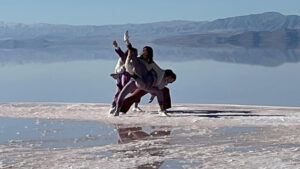How to Write Visually for Movies

In the world of filmmaking, visual storytelling plays a crucial role in capturing the attention and emotions of the audience. Writing visually for movies involves crafting a screenplay that vividly conveys the story through captivating imagery. In this blog post, we will explore various techniques and tips to help you enhance your visual writing skills and create an impactful cinematic experience.
To write visually, it is important to immerse yourself in the world of cinema. Watch movies across different genres, paying close attention to the visual aspects such as camera angles, framing, lighting, and color. Study the works of renowned filmmakers and analyze how they effectively use visuals to tell their stories.
Every movie has a unique visual identity that adds depth and meaning to the narrative. Before you start writing, take time to develop a clear visual concept. Consider the tone, mood, and atmosphere you want to convey and use this as a foundation for your writing.
In a screenplay, it is crucial to provide concise and evocative visual descriptions that can be understood by the director, cinematographer, and other members of the production team. Paint a vivid picture with your words, using strong verbs, sensory details, and carefully chosen adjectives. Avoid lengthy descriptions and focus on capturing the essence of the scene.
Visual metaphors and symbols can enhance the storytelling by adding layers of meaning. Incorporate elements that serve as visual cues, representing themes, emotions, or character traits. These metaphors can deepen the audience’s engagement and create a more immersive experience.
To make your writing visually engaging, explore different perspectives and camera angles. Experiment with unconventional shots and framing techniques that can convey a character’s state of mind or enhance the overall atmosphere. Be mindful of the story’s needs and choose camera movements that serve the narrative effectively.
Contrasts in visuals can create a powerful impact. Use contrast in lighting, color, and composition to emphasize mood shifts or emotional moments. Intentionally juxtaposing elements can create a visual tension that draws the audience’s attention and enhances the storytelling.
Remember that writing visually is just the first step. The collaborative nature of filmmaking requires effective communication and teamwork. Engage in open discussions with the director, cinematographer, and other key members of the production team to ensure that your visual intentions are effectively translated to the screen.
Writing visually is a skill that can be honed over time. Keep practicing and refining your craft. Learn from your own work and the feedback you receive. Stay updated with the latest trends and techniques in cinematography and visual storytelling to continually evolve as a writer.
Writing visually for movies is an art that requires a deep understanding of the power of imagery. By studying the works of great filmmakers, honing your descriptive skills, and collaborating effectively with the production team, you can create compelling screenplays that captivate audiences and bring your story to life on the big screen. So, let your imagination soar, and start writing visually to create impactful cinematic experiences.




